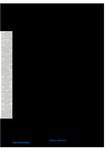The influence of creeping slope failure on turbidity current behaviour
| dc.contributor.author | Ayckbourne, AJM | |
| dc.contributor.author | Jerrett, RM | |
| dc.contributor.author | Poyatos‐Moré, M | |
| dc.contributor.author | Watkinson, Watkinson | |
| dc.contributor.author | Kane, IA | |
| dc.contributor.author | Taylor, KG | |
| dc.date.accessioned | 2022-11-02T14:10:02Z | |
| dc.date.available | 2022-11-02T14:10:02Z | |
| dc.date.issued | 2022-10-07 | |
| dc.identifier.issn | 0037-0746 | |
| dc.identifier.issn | 1365-3091 | |
| dc.identifier.uri | http://hdl.handle.net/10026.1/19830 | |
| dc.description.abstract |
<jats:title>ABSTRACT</jats:title><jats:p>Erosional scars, slumps, slides and debrites (mass‐transport deposits) on submarine slopes form relief that influences turbidity current behaviour. However, the interaction of mass‐transport deposit emplacement kinematics (i.e. rapid emplacement versus creep), the morphology of the evolving seafloor topography and subsequent flow types is complicated. This study describes two outcrop examples of deep‐water, predominantly turbiditic, deposits overlying mass‐transport deposits, from the Eocene slope succession of the Aínsa Basin (Spanish Pyrenees). In both examples, the mass‐transport deposit substrate continued to creep contemporaneously with turbidity current deposition and bypass. In the first case study, structures in the mass‐transport deposits are extensional and oriented parallel to flow. In the second, structures are compressional and oriented perpendicular to flow. Mudstones dominate the slope succession, but deposits overlying mass‐transport deposits form sandstone‐prone accumulations. Lateral confinement by flow‐parallel extensional faults enhanced channel‐formation. Channel incision occurred close to the exhumed fault plane on the hangingwall. Incision ceased as the fault gradually locked‐up, and channels avulsed to the hangingwall of a newly active normal fault, while the abandoned channel was filled by a thinning and fining‐upward succession. Barriers formed where the long axes of compressional anticlines developed in mass‐transport deposits formed perpendicular to flow. Here, turbidites filled the bathymetric lows in the axes of synclines. Continued tightening of synclinal depocentres led to repeated stoss side trapping and upslope accretion of coarse‐grained sediment accumulation. This generated thickening and coarsening‐up, followed by thinning and fining‐upward successions, tracking the decreasing, then increasing flow bypass associated with topographic expression on the mass‐transport deposit. This study shows how post‐emplacement creep, and orientation of topographic features on mass‐transport deposits, influence the routing and deposition of contemporaneous turbidity currents, and illustrates examples of facies successions that could be misinterpreted as the product of other autogenic submarine slope processes, such as lateral migration of sinuous channels, or compensational lobe stacking.</jats:p> | |
| dc.format.extent | 335-361 | |
| dc.language | en | |
| dc.language.iso | en | |
| dc.publisher | Wiley | |
| dc.subject | Ainsa Basin | |
| dc.subject | creep | |
| dc.subject | Eocene | |
| dc.subject | mass-transport deposit | |
| dc.subject | slope failure | |
| dc.subject | turbidites | |
| dc.subject | turbidity current | |
| dc.title | The influence of creeping slope failure on turbidity current behaviour | |
| dc.type | journal-article | |
| dc.type | Journal Article | |
| plymouth.author-url | https://www.webofscience.com/api/gateway?GWVersion=2&SrcApp=PARTNER_APP&SrcAuth=LinksAMR&KeyUT=WOS:000882017200001&DestLinkType=FullRecord&DestApp=ALL_WOS&UsrCustomerID=11bb513d99f797142bcfeffcc58ea008 | |
| plymouth.issue | 2 | |
| plymouth.volume | 70 | |
| plymouth.publication-status | Published | |
| plymouth.journal | Sedimentology | |
| dc.identifier.doi | 10.1111/sed.13049 | |
| plymouth.organisational-group | /Plymouth | |
| plymouth.organisational-group | /Plymouth/Faculty of Science and Engineering | |
| plymouth.organisational-group | /Plymouth/Faculty of Science and Engineering/School of Geography, Earth and Environmental Sciences | |
| plymouth.organisational-group | /Plymouth/REF 2021 Researchers by UoA | |
| plymouth.organisational-group | /Plymouth/REF 2021 Researchers by UoA/UoA07 Earth Systems and Environmental Sciences | |
| plymouth.organisational-group | /Plymouth/Research Groups | |
| plymouth.organisational-group | /Plymouth/Research Groups/Marine Institute | |
| plymouth.organisational-group | /Plymouth/Users by role | |
| plymouth.organisational-group | /Plymouth/Users by role/Academics | |
| dcterms.dateAccepted | 2022-10-04 | |
| dc.rights.embargodate | 2022-11-3 | |
| dc.identifier.eissn | 1365-3091 | |
| dc.rights.embargoperiod | Not known | |
| rioxxterms.versionofrecord | 10.1111/sed.13049 | |
| rioxxterms.licenseref.uri | http://www.rioxx.net/licenses/all-rights-reserved | |
| rioxxterms.type | Journal Article/Review |


